Reclaiming the Night Woods
How a firefly, a secret waterfall, and the pull of sunrise led me back to a tent
Dear Friends, this is the fourth in a multi-part series about my post-retirement travel adventures. I hope you enjoy wandering with me!
If you missed them, you can read prior posts here:
Note: if your email provider truncates this message, just click the link at the bottom of the message to read the dramatic conclusion!
On my first camping trip, the nuns at my Catholic boarding school took the junior and senior classes to a nearby farm. I remember the campfire, the guitar strumming, and the big tents packed with rowdy teenage girls. I loved being out in nature and especially loved being away from dorm life. I knew camping would become part of my future. I just didn’t know how.
In college, my first girlfriend and I went camping numerous times at, among other places, Hocking Hills State Park in Logan, Ohio. By then we had our own gear, though I don’t remember the details—only how much I loved sleeping outdoors. We hiked from the campground to Old Man’s Cave then on to Cedar Falls and finally to Ash Cave before returning to camp. Hiking what is now known as the Grandma Gatewood Trail (named in 1981, after native-Ohioan and the first solo female thru-hiker of the Appalachian Trail), we loved to explore the incredible formations we saw along the way: Devil Bathtub, Eagle Rock, Old Man’s Cave, Turtle Rock, and Sphinx Head, to name a few.
On one hike, we discovered a hidden waterfall and pool below the trail—a perfect hideaway for two teenage girls to swim in. Each visit to Hocking Hills meant returning to this secret sanctuary we liked to believe was ours alone.
In the 1980s, my life partner, Anne, and I camped regularly, including a memorable trip to Baxter State Park in Maine. It was a cool August night. Cuddled in our sleeping bags on the floor of our roomy four-person LL Bean tent, Anne had just dozed off when I saw flashing lights through the tent ceiling. “Northern Lights!” I shouted, jolting her from her slumber.
I scrambled out of my sleeping bag and dashed outside certain I’d see the Aurora Borealis. I looked up. I looked around. Clouds, illuminated only by a sliver of a moon, hung heavy over the trees. No other lights were visible in the night sky. I stood there in my pajamas deep in the Maine woods trying desperately to make sense of what I saw, or rather what I wasn’t seeing.
“It was a firefly,” Anne grumbled, as she stuck her head out of the door. “Caught between the rain fly and the tent. It was just a firefly.”
“What?” I shouted back at her. “A firefly? You gotta be kidding me.”
“No, you silly woman. Now come back to bed,” she said as she crawled back inside, her laughter muffled but obvious as I sheepishly skulked back into the tent.
I never lived that one down. And Anne and I never saw Northern Lights together. Years later, I stood in awe on my deck in Northern Michigan as the Aurora Borealis blanketed the sky. It looked nothing like a firefly.
As we got older and less agile, camping mostly meant one week a year at the Michigan Women’s Music Festival. Camping with thousands of lesbians in the Michigan woods made all the discomfort of sleeping on the ground more than worth it. Later we bought a pop-up camper with a softer mattress, and tent camping faded into memory.
In 2015, Wendy and I bought an egg camper, ‘Idgie,’ with a stove, fridge, and table/bed. By 2018, we upgraded to a sleek Winnebago Travato, complete with solar power, shower, and writing desk. Blissful but expensive, we adventured in “Wanda” (Wendy and Annette) three years before we sold her at the end of the pandemic for a surprising profit.
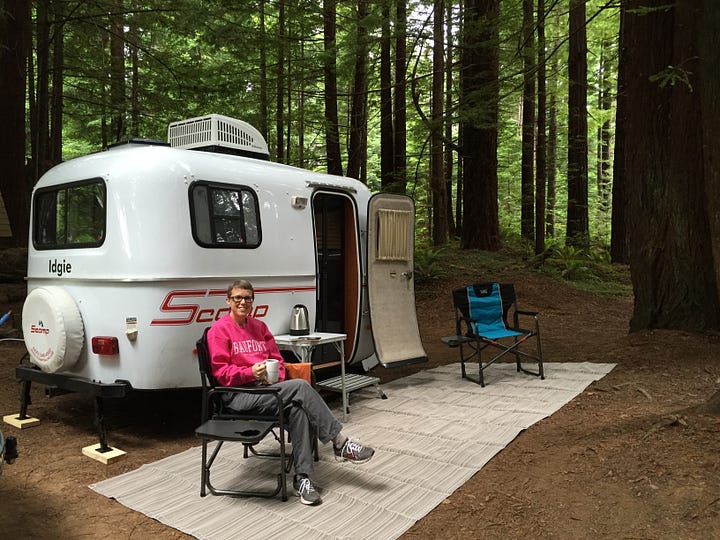
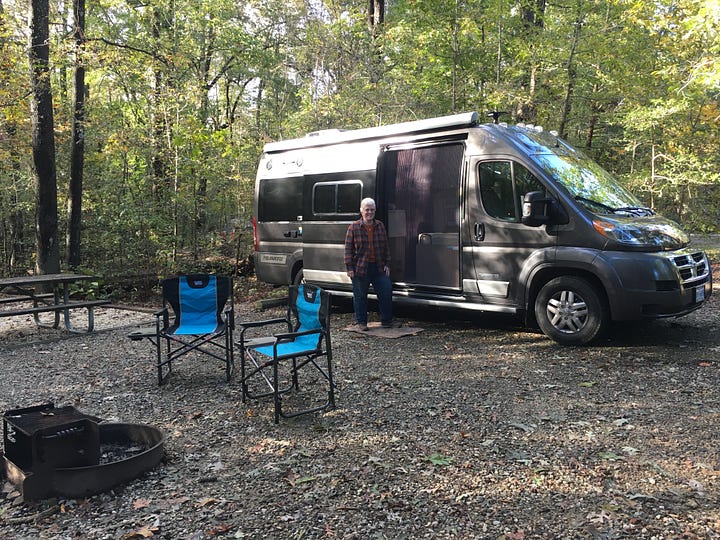
A Tent, Really?
So, with no van, no trailer, and new cars that couldn’t tow, what are outdoor lovers to do? Surprising to me and astonishing to some of our friends, the idea of tent camping resurfaced as an option. I don’t know which one of us brought it up, but soon, Wendy and I purchased a roomy tent big enough to hold both our cots and a little toilet for those middle-of-the-night emergencies. A tent would allow us opportunities to travel economically, enjoy campfires, and spend quiet times in the woods and on the beach together.
Our new roomy tent was perfect—until I tried setting it up alone. Smaller pop-up tents I tested were easier, but too low to crawl into and too small for a cot. I began exploring other options—state park cabins, KOA cabins, renting RVs, etc.—but the idea of tent camping kept nagging at me.
My friend, Sharon, a skilled world traveler and solo camper, pointed me to the NEMO Switch —a two-person tent that’s easy for one person to put up, (almost) tall enough to stand in, a wide and tall door to get in and out, and a surface area big enough for my cot and toilet. I fell in love! She even found a “pristine” model online for half the regular price (I later discovered that Nemo doesn’t sell it anymore, so, sadly, if you’re tempted, buying it used appears the only way to get one).
I spent the next couple of weeks assembling the rest of my camping gear: cooler, tarp, cot, sleeping pad, sleeping bag, pillow, telescoping tarp poles, camp chair, kitchen and fire accessories, and all the other basics to stay warm and comfortable out in the wild!
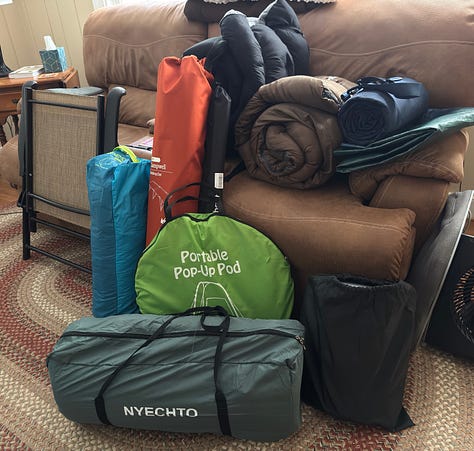
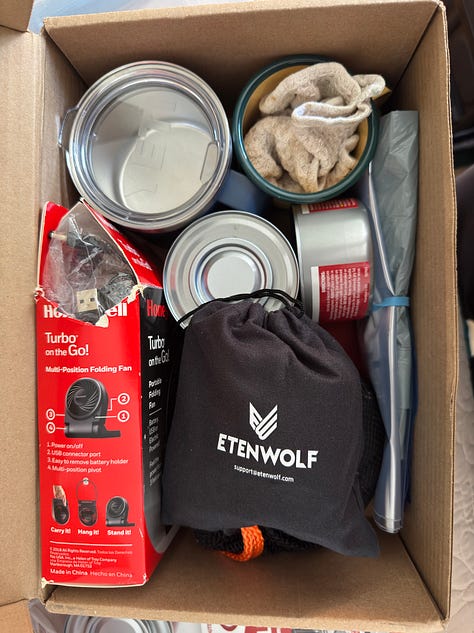
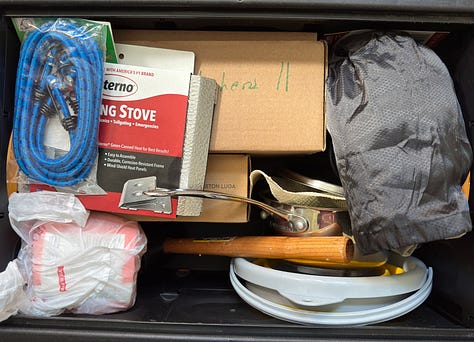
Setting Out!
When I set off on my 3-4 week adventure on September 1, I felt confident that I had everything I needed to camp and, should I choose to do so, could make this work. I hoped! But I figured the worst thing that could happen is that, if I couldn’t handle it, I’d throw everything back in my car and check into the nearest hotel. It didn’t seem too big a risk.
After my exploratory drive through Pennsylvania and Ohio (see my September 18th post, Reflections on America’s History, for more about this), and spending time with friends in Ann Arbor and Jackson, Michigan, I headed north into the Michigan woods. I still didn’t know where I’d end up, or if I even had a modicum of the nerve it would take to attempt real, live camping. As I pushed into what is affectionately known to Michiganders as “The Tip of the Mitt,” I knew I had to try—even if only for one night. But where?
Because I’d never spent much time on the Lake Huron side of the “mitten,” I decided that that’s where I wanted to end up. I quickly discovered, however, that two state park campgrounds in northeastern Michigan were closed for renovation. That was almost enough to dissuade me from camping at all, but I pressed on.
Google Maps reminded me of a campground I’d heard about years ago, back in my RV camping years, which sounded intriguing. With a mile of Lake Huron shoreline, two hundred acres of woods, a well-equipped park store, bathrooms, beautiful views, and only five minutes to Mackinaw City, Mackinaw Mill Creek Camping, offered everything I needed for a safe, low-risk, camping experience. I smiled when I read on their website, “We even have sites for those just wanting to pitch a tent.” That’s me!
Picking a camp site is always part of the adventure. With over 300 sites and most of them spoken for, it took a while to identify a site that would work for someone “just wanting to pitch a tent.” I wasn’t thrilled with the site itself, but I couldn’t complain. First, it had electricity so I could plug in my extension cord and surge suppressor to easily charge my devices. Secondly, and even more importantly, it was only a short walk to the Lake Huron shore, visible from my site through the trees.
I pulled into my site, took a deep breath, opened the backseat door, and began to unpack. A picnic table provided a perfect surface to lay everything out. Mimicking an instructional YouTube video I’d watched, I dropped the tent bag on the ground and got to work.
Because the poles were color-coded and the tent attached to them without having to thread them into tent sleeves, the tent frame went up in just a few minutes. Even positioning and securing the rainfly posed no real challenge. I hammered the tent stakes into the ground making it appear like I knew what I was doing. In fact, I even assured a woman in a large fifth-wheel across the way who offered her help that I was fine. Thank you very much.
Then I was stumped. How do I get two telescoping poles attached to the tent’s long awning to stand up on their own? I struggled with the poles unsuccessfully for a few minutes before flopping down into my camp chair defeated. That’s when I saw two neatly wrapped guy lines next to the tent bag, which after emptying, I’d placed back on the picnic table.
Although I didn’t know how they would help or what to do with them, I figured they must be the answer. And they were. After some fiddling, the poles finally stood tall and I felt triumphant. I’d done it!
Now all I had to do was cook dinner over a Bunsen burner, make a campfire, and, when the stars blanketed the sky, crawl into my cozy sleeping bag (laying on top of two pads--one inflatable and one cushy—on my elevated cot!).
For three nights, I slept comfortably and warm in my great tent, enjoyed roaring campfires, woke up to stunning sunrises, and took peaceful walks on the quite Lake Huron shore (except Saturday night when the Annual Richard Crane Memorial Truck Show held their famous Parade of Lights across the Mackinac Bridge. They made a huge ruckus, even several miles away!).
When I returned home to Virginia, still feeling flummoxed by guy lines and, especially why they’re called that, I did some research. I discovered that “guy line” originates from the French word “guie,” meaning “guide,” which was later adopted by the Dutch as “gei,” now known as “guy.” Clearly, I needed something to guide me. I’m glad they were there!
I’d reclaimed tent camping as a viable travel option and, at $29 a night for a site with electricity, an inexpensive way to explore this beautiful continent. Maybe, one day, I’ll even see Northern Lights outside my tent instead of just a firefly!



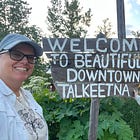

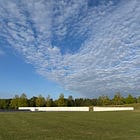
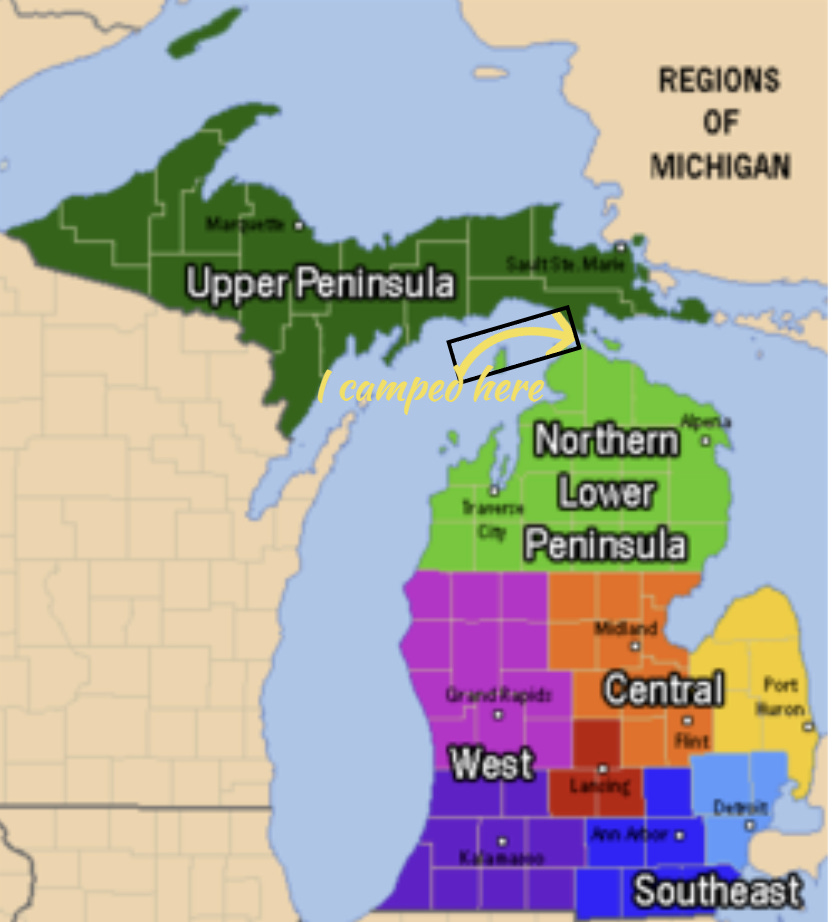
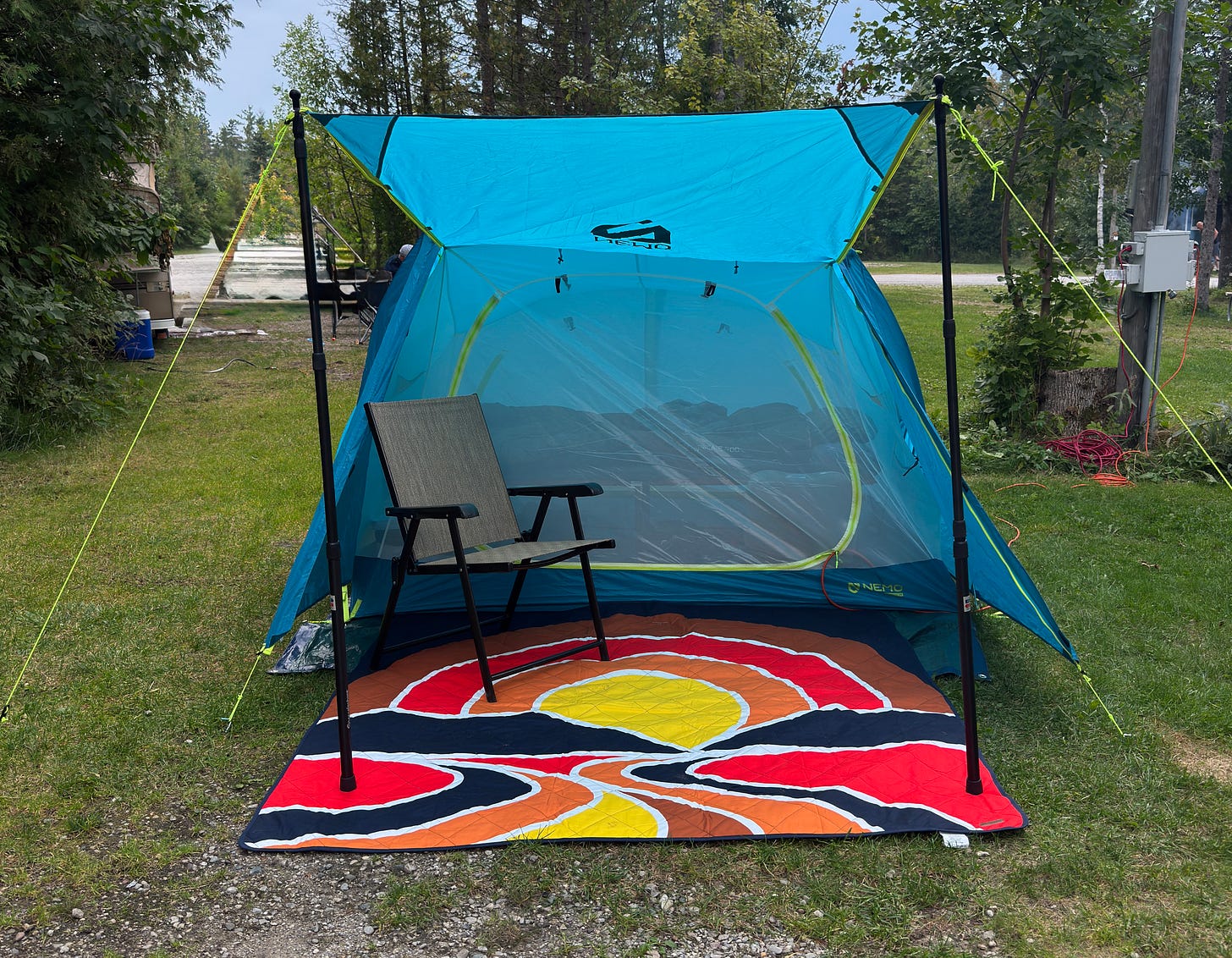
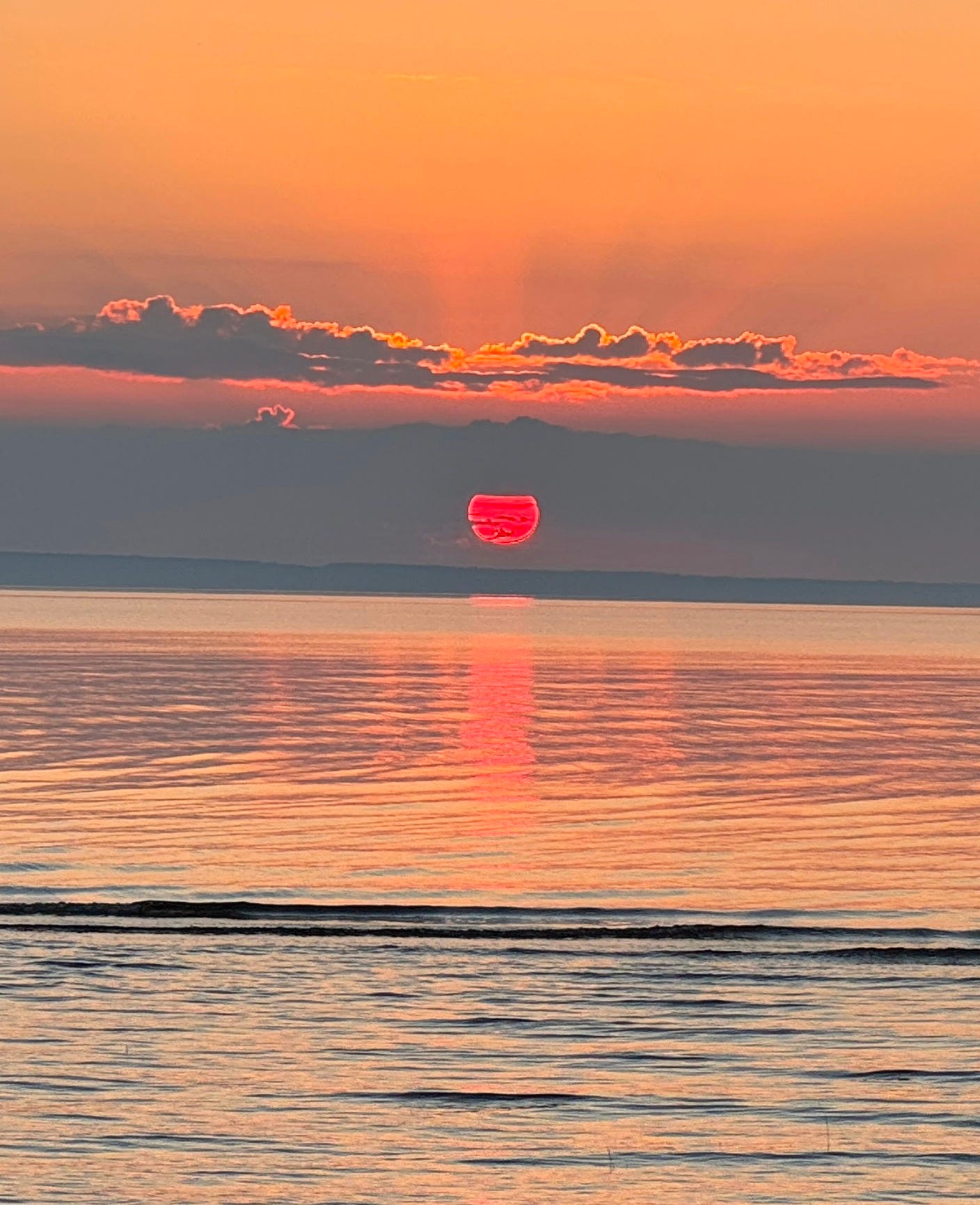
I’m so glad your first solo camping went well and you figured things out. Wish I could have joined you - we would be the Nemo twins.
What beautiful recollections from your camping adventures - makes me want to travel to the tip of the mitt myself. Love how you brought the firefly back in at the end. I hope you get to see the Northern Lights from a tent someday too - but from our bigger tent with me alongside you!